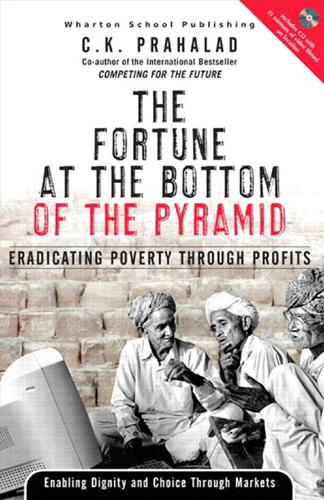
The fortune at the bottom of the pyramid
by
C. K. Prahalad
Published 15 Jan 2005
What is needed is a better approach to help the poor, an approach that involves partnering with them to innovate and achieve sustainable win–win scenarios where the poor are actively engaged and, at the same time, the companies providing products 3 The Fortune at the Bottom of the Pyramid 4 Purchasing power parity in U.S. dollars Population in millions > $20,000 Tier 1 75 – 100 $1,500 – $20,000 Tiers 2–3 1,500 – 1,750 $1,500 Tier 4 4,000 < $1,500 Tier 5 Figure 1.1 The economic pyramid. Source: C. K. Prahalad and Stuart Hart, 2002. The Fortune at the Bottom of the Pyramid, Strategy+ Business, Issue 26, 2002. Reprinted with permission from strategy + business, the award-winning management quarterly published by Booz Allen Hamilton. www.strategy-business.com.
…
Praise for The Fortune at the Bottom of the Pyramid “C. K. Prahalad argues that companies must revolutionize how they do business in developing countries if both sides of that economic equation are to prosper. Drawing on a wealth of case studies, his compelling new book offers an intriguing blueprint for how to fight poverty with profitability.” Bill Gates Chairman and Chief Software Architect, Microsoft “The Bottom of the Pyramid belongs at the top of the reading list for business people, academics, and experts pursuing the elusive goal of sustainable growth in the developing world. C. K. Prahalad writes with uncommon insight about consumer needs in poor societies and opportunities for the private sector to serve important public purposes while enhancing its own bottom line.
…
Christopher Rodrigues CEO, Visa International “An important and insightful work showing persuasively how the private sector can be put at the center of development, not just as a rhetorical flourish but as a real engine of jobs and services for the poor.” Mark Malloch Brown Administrator United Nations Development Programme “Most people recognize that poverty is a major problem in the world, yet they throw up their hands and say, ‘What to do?’ Not so C. K. Prahalad. The Fortune at the Bottom of the Pyramid gives us hope and strategies for eradicating poverty through profits that benefit all. Pass this book on to those who need to read it.” Ken Blanchard co-author of The One Minute Manager® and The Secret: What Great Leaders Know-And Do In the face of accelerating turbulence and change, business leaders and policy makers need new ways of thinking to sustain performance and growth.
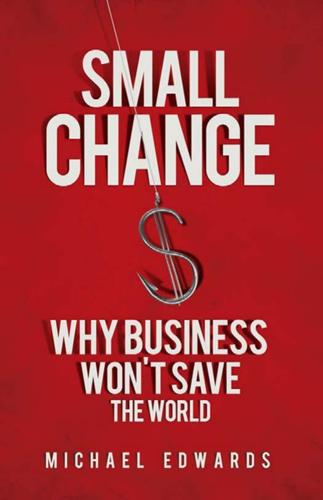
Small Change: Why Business Won't Save the World
by
Michael Edwards
Published 4 Jan 2010
The lesson is very clear: Don’t sacrifice systems change for quick, material results. Invest in the capacity of countries and communities to manage and direct their own 40 small change health care and other aspects of their development so that they can cope with whatever problems come their way. microcredit and the “fortune at the bottom of the pyramid” The other high-profile success story of philanthrocapitalism is microcredit or microfinance — in some people’s minds, part of a broader claim that markets are the best way to eradicate global poverty. Although few rigorous evaluations of the impact of microfinance exist, it is clear that increasing poor people’s access to savings, credit, and other financial services is a very good thing, and in one or two countries it has already reached significant scale — 21 million clients and 105 million family members in Bangladesh alone.6 Microfinance increases people’s resilience, reduces their need to sell precious assets in times of trouble, and finances consumption, including spending on health and education that are vital for the future; but it doesn’t move them out of poverty on its own.
…
Pollin, “Micro-credit: False Hopes and Real Possibilities,” Foreign Policy in Focus, June 21, 2007. 7. E. Malkin, “Microfinance’s Success Sets Off a Debate in Mexico,” New York Times, April 5, 2008. 8. Hudson Institute, Index of Global Philanthropy (Washington, D.C.: Hudson Institute, 2007). 9. C. K. Prahalad, The Fortune at the Bottom of the Pyramid: Eradicating Poverty Through Profits (Upper Saddle River, NJ: Wharton School Publishing, 2006). 10. A. Karnani, “Micro-finance Misses Its Mark,” Stanford Social Innovation Review (Summer 2007): 34–40. 11. R. Tandon and J. Thekkudan, “Women’s Livelihood and Global Engagement in a Globalized World” (New Delhi: PRIA and Sussex: Institute for Development Studies, 2007). 12.

Geek Heresy: Rescuing Social Change From the Cult of Technology
by
Kentaro Toyama
Published 25 May 2015
Good tools are important, but it’s even more important that architects and artisans use the right combination of tools in the right way for each decision-making task. Eradicating Poverty Through Profits? Another fashionable trend sees practitioners applying for-profit business approaches to social causes. The idea was put forth seductively by C. K. Prahalad, a professor of business at the University of Michigan. In his 2004 book The Fortune at the Bottom of the Pyramid, he wrote that the 4 billion people in the world who live on less than $2 a day could be enriched if they were viewed as a business opportunity.20 Prahalad’s motto is captured in the book’s subtitle: Eradicating Poverty Through Profits. According to Prahalad, governments and nonprofits have been going about things all wrong, especially when it comes to poverty.
…
Amusing Ourselves to Death: Public Discourse in the Age of Show Business, 20th Anniversary Edition. Penguin. Pradan. (2014). PRADAN annual report 2013–2014, www.pradan.net/index.php?option=com_content&task=view&id=109&Itemid=88. ———. (n.d.). Mission, www.pradan.net/index.php?option=com_content&task=view&id=18&Itemid=4. Prahalad, C. K. (2004). The Fortune at the Bottom of the Pyramid: Eradicating Poverty Through Profits. Wharton School Publishing. Prensky, Marc. (2011). Digital natives, digital immigrants. In Marc Bauerlein, ed., The Digital Divide: Arguments for and Against Facebook, Google, Texting, and the Age of Social Networking. Tarcher/Penguin. Pritchett, Lant. (1996).
…
See also Social media Fairlie, Robert, 12, 31 Family connections, 148, 250(n11), 257(n52) Farmer, Paul, 254(n25) Farmer Field Schools, 207 The fear of missing out (FOMO), 41, 234(n7) Feudal systems, 237(n20) Financial crisis (2007–2008), 61, 97 Finland: student achievement, 13 First Law of Robotics, Asimov’s, 217, 276–277(n16) The Flickering Mind (Oppenheimer), 10, 228(n17) Florida, Richard, 186–187. See also Creative class Food insecurity, 22, 230(n7) Ford Foundation, 86 Foreign aid, 72, 198. See also International development Foreign direct investment, 183–185 The Fortune at the Bottom of the Pyramid (Prahalad), 82–84 Foundation and Earth (Asimov), 277(n16) Foundation for International Community Assistance, 71 France: compassionate class, 190 Franklin, Benjamin, 276(n8) Franzen, Jonathan, 86 Freedom, 93. See also Democracy Free will, illusion of, 264(n45), 265(n3) Free-PC, 48 Freud, Sigmund, 161, 260(n18) Fukuyama, Francis, 276(n15) Gaddafi, Muammar, 33 Games, computerized.

Consumed: How Markets Corrupt Children, Infantilize Adults, and Swallow Citizens Whole
by
Benjamin R. Barber
Published 1 Jan 2007
See the OECD website www.oecd.org/dataoecd/40/3/353879786.pdf. Complete data are available at the Sustainable Development website: www.globalissues.org/TradeRelated/Debt/UsAid.asp. 41. C. K. Prahalad, The Fortune at the Bottom of the Pyramid: Eradicating Poverty Through Profits (Upper Saddle River, N.J.: Wharton School Publishing, 2004), pp. xi–xii. The publication of two articles, “The Fortune at the Bottom of the Pyramid” in Strategy + Business (January 2002), with Stuart L. Hart, and “Serve the World’s Poor, Profitably” in the Harvard Business Review (September 2002) with Allen Hammond, signaled Prahalad’s success in breaking through into the business community with his ideas. 42.
…
Although each, as I will show, finally depends, like almost every reform we have examined here, on some form of government intervention, they remind us of the dynamism of capitalism when it is liberated from a dominant cultural ethos to which it has become tethered, and allowed to serve a system that by addressing real need can accommodate justice as well as prosperity. In his popular text with the self-explanatory title The Fortune at the Bottom of the Pyramid, C. K. Prahalad, an economist at the University of Michigan, seeks to reattach the heavy load of poverty reduction to the engine of what he calls an “inclusive capitalism” by treating the poor as a capitalist “growth opportunity” in which their own collaborative contribution is critical.
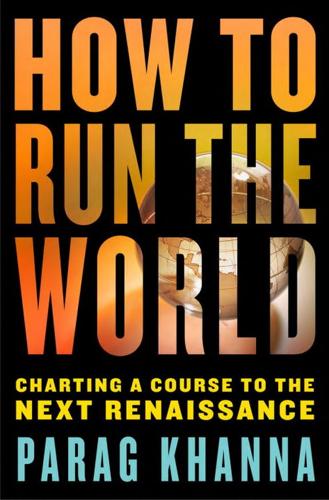
How to Run the World: Charting a Course to the Next Renaissance
by
Parag Khanna
Published 11 Jan 2011
Cambridge, UK: Cambridge University Press, 2004. Perkins, Dwight H., Steven Radelet, and David L. Lindauer. Economics of Development. 6th ed. New York: W. W. Norton and Co., 2006. Pogge, Thomas W. World Poverty and Human Rights: Cosmopolitan Responsibilities and Reforms. Cambridge, UK: Polity, 2002. Prahalad, C. K. The Fortune at the Bottom of the Pyramid: Eradicating Poverty Through Profits. Philadelphia: Wharton School Publishing, 2006. Pritchett, Lant. Let Their People Come: Breaking the Gridlock on International Labor Mobility. Washington, D.C.: Center for Global Development, 2006. Rangan, V. Kasturai, ed. Business Solutions for the Global Poor: Creating Social and Economic Value.
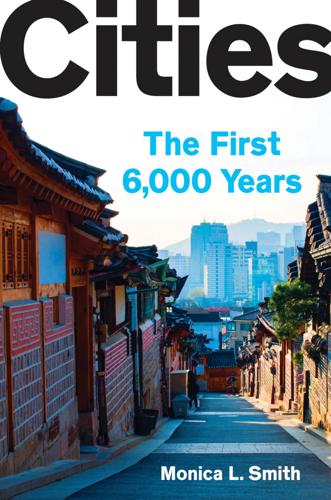
Cities: The First 6,000 Years
by
Monica L. Smith
Published 31 Mar 2019
Richard Livingstone (Oxford: Oxford University Press, 1943), 149, that each infantryman got two drachmas, “one for himself and another for his servant,” though we can only speculate the extent to which the infantrymen truly split their earnings fifty-fifty with those who assisted them. the work of marketing experts: Michael J. Silverstein and Neil Fiske, Trading Up: Why Consumers Want New Luxury Goods—and How Companies Create Them, with John Butman, rev. ed. (New York: Portfolio, 2005). other economists have called BOP: C. K. Prahalad, The Fortune at the Bottom of the Pyramid (Upper Saddle River, N.J.: Wharton School Publishing, 2005). the authors call “rocketing”: Silverstein and Fiske, Trading Up, 6. In the ancient subcontinental cities: Jonathan Mark Kenoyer, Ancient Cities of the Indus Valley Civilization (Karachi: Oxford University Press, 1998), 143.
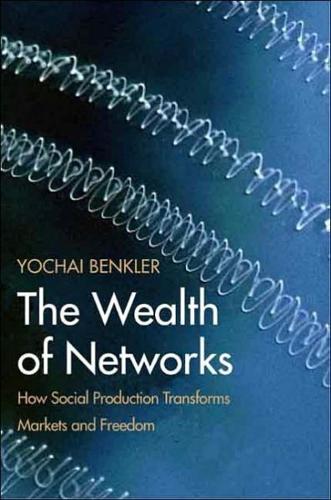
The Wealth of Networks: How Social Production Transforms Markets and Freedom
by
Yochai Benkler
Published 14 May 2006
King, Towards Electronic Journals: Realities for Scientists, Librarians, and Publishers (Washington, DC: Special Libraries Association, 2000), 273. 109. Harold Varmus, E-Biomed: A Proposal for Electronic Publications in the Biomedical Sciences (Bethesda, MD: National Institutes of Health, 1999). 110. C. K. Prahald, The Fortune at the Bottom of the Pyramid: Eradicating Poverty Through Profits (Upper Saddle River, NJ: Wharton School of Publishing, 2005), 319-357, Section 4, "The ITC e-Choupal Story." 111. For the sources of numbers for the software industry, see chapter 2 in this volume. IBM numbers, in particular, are identified in figure 2.1. 112.
…
King, Towards Electronic Journals: Realities for Scientists, Librarians, and Publishers (Washington, DC: Special Libraries Association, 2000), 273. 109. Harold Varmus, E-Biomed: A Proposal for Electronic Publications in the Biomedical Sciences (Bethesda, MD: National Institutes of Health, 1999). 110. C. K. Prahald, The Fortune at the Bottom of the Pyramid: Eradicating Poverty Through Profits (Upper Saddle River, NJ: Wharton School of Publishing, 2005), 319-357, Section 4, "The ITC e-Choupal Story." 111. For the sources of numbers for the software industry, see chapter 2 in this volume. IBM numbers, in particular, are identified in figure 2.1. 112.

Frugal Innovation: How to Do Better With Less
by
Jaideep Prabhu Navi Radjou
Published 15 Feb 2015
Doing better with less Frugal innovation is not just about “doing more with less” but about “doing better with less”, and finding ways to reduce complexity in all aspects of the business. But when done right, companies will find that they are better placed to do the following. Capture underserved markets at the bottom of the pyramid In his book, The Fortune at the Bottom of the Pyramid, C.K. Prahalad, a management guru, argued that low-income people in developing economies such as India, Africa and Brazil collectively represent a huge, untapped market. But a bottom of the pyramid exists in developed economies too, and is not negligible. According to Accenture, a multinational management consulting and services company, low-income Europeans represent a €220 billion ($280 billion) untapped market.
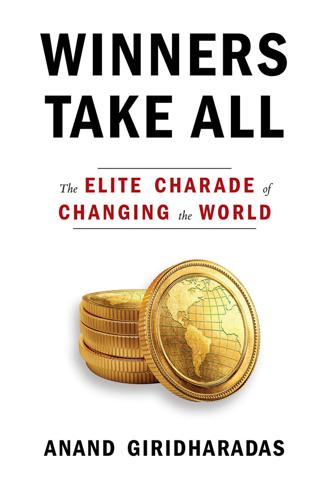
Winners Take All: The Elite Charade of Changing the World
by
Anand Giridharadas
Published 27 Aug 2018
It was at work every time one bought a pair of cloth shoes and took comfort in knowing that another pair of shoes would soon be slipped onto a poor person’s feet. It could be detected in a poster on a college campus: “Research shows that giving makes you happier. Be selfish & give.” It could be seen in the buzzy idea of the “fortune at the bottom of the pyramid,” promoted by the late management scholar C. K. Prahalad, who promised big business “a win-win situation: not only do corporations tap into a vibrant market, but by treating the poor as consumers they are no longer treated with indignity; they become empowered customers.” It could be, for a World Bank adviser on refugee issues, a vital selling point for what once might have been advocated purely on compassionate grounds: “Getting Syrians back to work—a win-win for host countries and the refugees.”
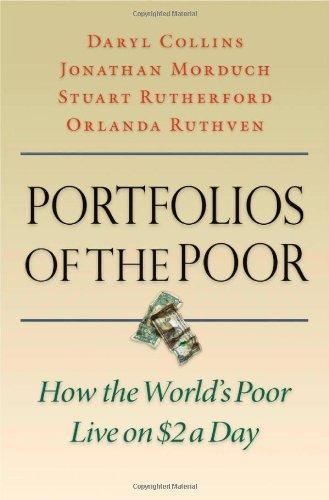
Portfolios of the poor: how the world's poor live on $2 a day
by
Daryl Collins
,
Jonathan Morduch
and
Stuart Rutherford
Published 15 Jan 2009
Quarterly Journal of Economics 114 (3): 769–817. Patole, Meenal, and Orlanda Ruthven. 2001. “Metro moneylenders: Microcredit providers for Delhi’s poor.” Small Enterprise Development 13 (2): 36–45. Pauly, Mark. 1968. “The economics of moral hazard: Comment.” American Economic Review 58 (3): 531–37. Prahalad, C. K. 2005. The Fortune at the Bottom of the Pyramid. Upper Saddle River, NJ: Wharton School Publishing. Reille, Xavier, and Sarah Forester. 2008. “Foreign capital investment in microfinance.” Consultative Group to Assist the Poor, CGAP Focus Note 43. Rosenberg, Richard. 2007. “CGAP reflections on the Compartamos initial public offering: A case study on microfinance interest rates and profits.”
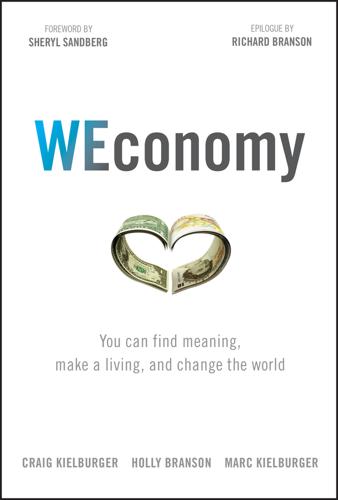
WEconomy: You Can Find Meaning, Make a Living, and Change the World
by
Craig Kielburger
,
Holly Branson
,
Marc Kielburger
,
Sir Richard Branson
and
Sheryl Sandberg
Published 7 Mar 2018
Done right, an entry into these markets brings increased choice, opportunity, competition, and a chance to increase quality of life in those communities. Business-based solutions are more sustainable and empowering than aid or a handout, which is finite and can create dependency. Hidden market prospects exist globally. In his landmark book, The Fortune at the Bottom of the Pyramid: Eradicating Poverty through Profits, business professor C.K. Prahalad laid out the money-making opportunities that come with appealing to the world's four billion poorest people. The world's poorest socioeconomic group is also the largest, and the most neglected by the market. The Emerging Markets11 The Future is Here In 2014, the OECD estimated that the population in emerging markets made up 85 percent of the world's population.
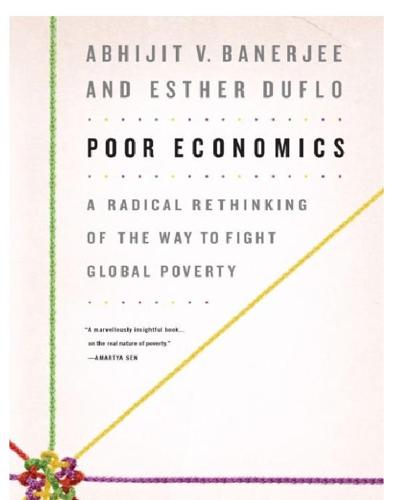
Poor Economics: A Radical Rethinking of the Way to Fight Global Poverty
by
Abhijit Banerjee
and
Esther Duflo
Published 25 Apr 2011
Net assets include all savings, capital, and household assets net of borrowing. 13 Dean Karlan and Sendhil Mullainathan, “Debt Cycles,” work in progress (2011). 14 Abhijit Banerjee, Esther Duflo, Rachel Glennerster, and Cynthia Kinnan, “The Miracle of Microfinance?,” MIT, manuscript (2010). Bruno Crépon, Florencia Devoto, Esther Duflo, and William Parienté, “Evaluation d’impact du microcrédit en zone rural: Enseignement d’une expérimentation randomisée au Maroc,” MIT, mimeo. Chapter 9 1 C. K. Prahalad, The Fortune at the Bottom of the Pyramid (Philadelphia: Wharton School Publishing, 2004). 2 Tarun Khanna, Billions of Entrepreneurs: How China and India Are Reshaping Their Futures—and Yours (Boston: Harvard Business School Publishing, 2007). 3 Suresh de Mel, David McKenzie, and Christopher Woodruff, “Returns to Capital in Microenterprises: Evidence from a Field Experiment,” Quarterly Journal of Economics 123 (4) (2008): 1329—1372. 4 David McKenzie and Christopher Woodruff, “Experimental Evidence on Returns to Capital and Access to Finance in Mexico,” World Bank Economic Review 22 (3) (2008): 457–482. 5 Abhijit Banerjee, Raghabendra Chattopadhyay, Esther Duflo, and Jeremy Shapiro, “Targeting the Hard-Core Poor: An Impact Assessment,” MIT (2010), mimeo. 6 For a description of the Townsend data, see Krislert Samphantharak and Robert Townsend, “Households as Corporate Firms: Constructing Financial Statements from Integrated Household Surveys,” University of California at San Diego and University of Chicago (2006), mimeo. 7 The study in Peru is Dean Karlan and Martin Valdivia,“Teaching Entrepreneurship: Impact of Business Training on Microfinance Clients and Institutions,” Review of Economics and Statistics, forthcoming.
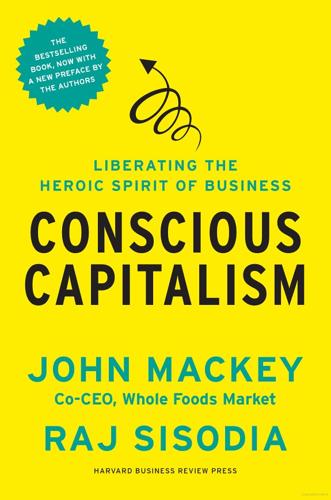
Conscious Capitalism, With a New Preface by the Authors: Liberating the Heroic Spirit of Business
by
John Mackey
,
Rajendra Sisodia
and
Bill George
Published 7 Jan 2014
Kramer, “Creating Shared Value: How to Reinvent Capitalism—and Unleash a Wave of Innovation and Growth,” Harvard Business Review, January–February 2011, 2–17. 5. Bill Gates, “Making Capitalism More Creative,” Time, July 31, 2008, available at www.time.com/time/business/article/0,8599,1828069,00.html. 6. The late C. K. Prahalad popularized this idea through his book The Fortune at the Bottom of the Pyramid (Philadelphia: Wharton School Publishing, 2004). 7. B Lab, “B Corps Redefine Success in Business,” annual report, 2012, www.bcorporation.net/. Appendix C 1. Viktor E. Frankl, Man’s Search for Meaning (Boston: Beacon Press, 1959; first published in Austria in 1946 under the title Ein Psycholog erlebt das Konzentrationslager). 2.
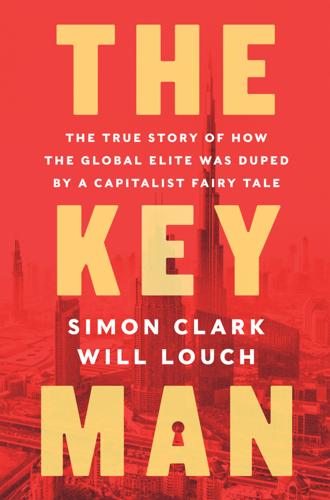
The Key Man: The True Story of How the Global Elite Was Duped by a Capitalist Fairy Tale
by
Simon Clark
and
Will Louch
Published 14 Jul 2021
Most people in emerging markets were extremely poor but they were rapidly acquiring more purchasing power and economies were booming. A fashionable new business theory supported Arif’s pitch. Put simply, the new idea was that investing was a way to do good as well as to make money. The Indian academic C. K. Prahalad was a prophet of this theory. His 2004 book, The Fortune at the Bottom of the Pyramid: Eradicating Poverty Through Profits, was a seminal articulation of the creed. Prahalad’s ideas percolated through universities and governments and were enthusiastically embraced by global business leaders including Paul Polman, a Dutchman who considered training to be a priest and a doctor but went on to become chief executive of Unilever, the consumer goods maker.

The Blue Sweater: Bridging the Gap Between Rich and Poor in an Interconnected World
by
Jacqueline Novogratz
Published 15 Feb 2009
Le Guin (Creative Education) Purple Hibiscus by Chimamanda Ngozi Adichie (Anchor) Season of Migration to the North by Tayeb Salih (NYRB Classics) Shadow Lines by Amitav Ghosh (Mariner Books) Shooting an Elephant by George Orwell (Penguin Books) The Tempest by William Shakespeare Things Fall Apart by Chinua Achebe (Heinemann) Train to Pakistan by Khushwant Singh (Grove Press) BOOKS AND ARTICLES ON INNOVATIVE SOLUTIONS TO POVERTY ALLEVIATION “A Behavioral-Economics View of Poverty” by Marianne Bertrand, Sendhil Mullainathan, and Eldar Shafir (American Economic Review 94, no. 2) The Bottom Billion: Why the Poorest Countries are Failing and What Can Be Done About It by Paul Collier (Oxford University Press) Capitalism as if the World Matters by Jonathon Porritt and Amory B. Lovins (Earthscan Publications) Development as Freedom by Amartya Sen (Anchor) The End of Poverty: Economic Possibilities for Our Time by Jeffrey D. Sachs (Penguin Press) The Fortune at the Bottom of the Pyramid: Eradicating Poverty Through Profits by C.K. Prahalad (Wharton School Publishing) Making Globalization Work by Joseph E. Stiglitz (W.W. Norton) The Mystery of Capital: Why Capitalism Triumphs in the West and Fails Everywhere Else by Hernando de Soto (Basic Books) Pathologies of Power: Health, Human Rights, and the New War on the Poor by Paul Farmer (University of California Press) Philanthrocapitalism: How the Rich Can Save the World by Matthew Bishop and Michael Green (Bloomsbury Press) Plan B 2.0: Rescuing a Planet Under Stress and a Civilization in Trouble by Lester R.

Whole Earth Discipline: An Ecopragmatist Manifesto
by
Stewart Brand
Published 15 Mar 2009
AES was trustworthy, and its new customers were trustworthy, but President Hugo Chávez turned out not to be. After initially supporting the effort, he nationalized the system in 2007 and threw out AES. (The company took its lessons learned and its Caracas team to install a similar system in São Paulo.) AES, among many other corporations, was inspired by C. K. Prahalad’s The Fortune at the Bottom of the Pyramid: Eradicating Poverty Through Profits (2005). The book spells out how companies can reach the world’s 4 billion poor and deliver goods and services at the interface between the formal and informal economies. Prahalad writes that the poor shop after seven P.M.; they buy in tiny quantities; they welcome relief from the premium prices they often have to pay to slum (sometimes criminal) monopolies; and they are comfortable leapfrogging to new technologies.

The Economics of Enough: How to Run the Economy as if the Future Matters
by
Diane Coyle
Published 21 Feb 2011
Collected Papers on the Experimental Foundations of Economics and Political Science. Cheltenham, UK: Edward Elgar. Praag, Bernard M. S. van, and Ada Ferrer-i-Carbonell. 2004. Happiness Quantified: A Satisfaction Calculus Approach. New York: Oxford University Press. Pralahad, C. K. 2004. The Fortune at the Bottom of the Pyramid: Eradicating Poverty through Profits. Pittsburgh, PA: Wharton Business School. Putnam, Robert. 1993. Making Democracy Work: Civic Traditions in Modern Italy. Princeton: Princeton University Press. ———. 2000. Bowling Alone. New York: Simon & Schuster. ———, ed. 2002. Democracies in Flux: The Evolution of Social Capital in Contemporary Society.

Blockchain Revolution: How the Technology Behind Bitcoin Is Changing Money, Business, and the World
by
Don Tapscott
and
Alex Tapscott
Published 9 May 2016
Embassy, http://nicaragua.usembassy.gov/property_disputes_in_nicaragua.html. There are an estimated thirty thousand properties in dispute. 4. Interview with Joyce Kim, June 12, 2015. 5. Ibid. 6. Ibid. 7. www.worldbank.org/en/news/press-release/2015/04/15/massive-drop-in-number-of-unbanked-says-new-report; and C. K. Prahalad, The Fortune at the Bottom of the Pyramid: Eradicating Poverty Through Profits (Philadelphia: Wharton School Publishing, 2009). This figure is an estimate. 8. Interview with Joyce Kim, June 12, 2015. 9. www.ilo.org/global/topics/youth-employment/lang—en/index.htm. 10. Thomas Piketty, Capital in the Twenty-First Century (Cambridge, Mass.: Belknap Press, 2014). 11. www.brookings.edu/~/media/research/files/papers/2014/05/declining%20business%20dynamism%20litan/declining_business_dynamism_hathaway_litan.pdf. 12.
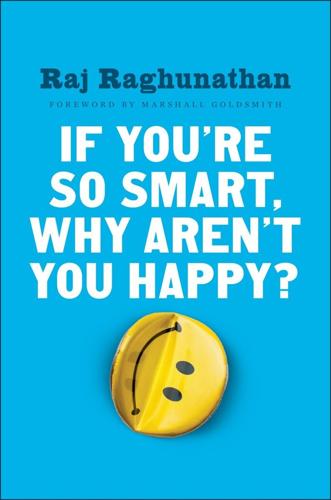
If You're So Smart, Why Aren't You Happy?
by
Raj Raghunathan
Published 25 Apr 2016
significant proportion of the world’s population: According to one article, as high a proportion as 60 percent of the world’s population does not have access to adequate water-related sanitation; see “60% of the World’s Population Still Don’t Have the Best Innovation in Human Health,” Slate, Feb. 22, 2013, accessed on Sept. 18, 2015, at www.slate.com/blogs/future_tense/2013/02/22/_60_percent_of_the_world_population_still_without_toilets.html. “bottom of the pyramid”: This is a term introduced by management professor C. K. Prahalad to refer to those below the poverty line; C. K. Prahalad, The Fortune at the Bottom of the Pyramid: Eradicating Poverty Through Profits (Upper Saddle River, NJ: Pearson Education, 2005). have repeatedly shown: See Drive by Dan Pink for a reader-friendly review of this literature; D. H. Pink, Drive: The Surprising Truth About What Motivates Us (New York: Penguin, 2011). climate change: E.g., see T.
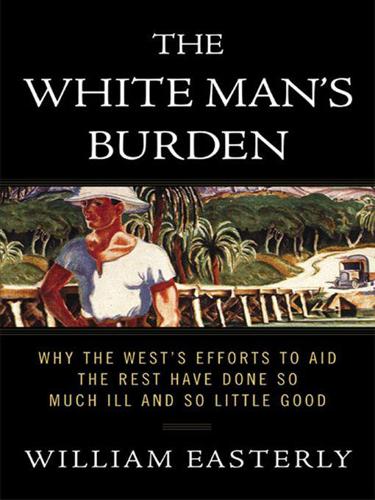
The White Man's Burden: Why the West's Efforts to Aid the Rest Have Done So Much Ill and So Little Good
by
William Easterly
Published 1 Mar 2006
Commonly, a baby suffering from diarrhea-induced dehydration goes into shock and dies. Preparing food with unwashed hands spreads the bacteria and viruses that cause diarrhea. In 2005, C. K. Prahalad, a University of Michigan Business School professor, wrote a fascinating book, The Fortune at the Bottom of the Pyramid: Eradicating Poverty Through Profits. He shows how private firms can sometimes find it in their own interest to help solve some of the problems of the poor that are traditionally addressed by aid agencies. The Searchers in a free market do much better than aid agencies in solving specific problems of the poor, although having a profit incentive to do so is not the typical case.
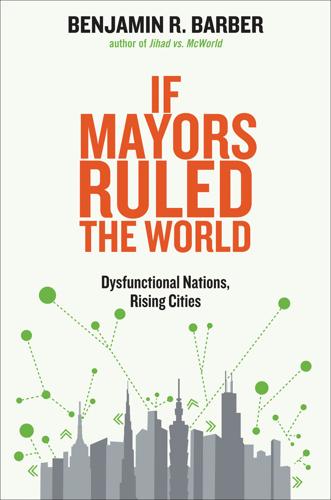
If Mayors Ruled the World: Dysfunctional Nations, Rising Cities
by
Benjamin R. Barber
Published 5 Nov 2013
Prahalad and Muhammad Yunus (below) in Benjamin Barber, Consumed: How Markets Corrupt Children, Infantilize Adults, and Swallow Citizens Whole, New York: W. W. Norton, 2007, pp. 323–326. De Soto has acknowledged the issues and observed that a considerable number of those who have been supposed beneficiaries of legalizing capital have expressed a preference for going back to the old invisible system. 31. C. K. Prahalad, The Fortune at the Bottom of the Pyramid: Eradicating Poverty Through Profits, Upper Saddle River, NJ: Wharton School Publishing, 2004, pp. xi–xii. 32. For a useful, if dated, narrative depicting Grameen’s beginnings and its founding vision, see David Bornstein, The Price of a Dream: The Story of the Grameen Bank and the Idea That Is Helping the Poor to Change Their Lives, Chicago: University of Chicago Press, 1997.
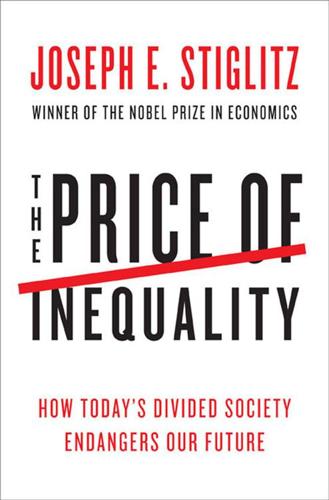
The Price of Inequality: How Today's Divided Society Endangers Our Future
by
Joseph E. Stiglitz
Published 10 Jun 2012
Stiglitz and A. Weiss, “Credit Rationing in Markets with Imperfect Information,” American Economic Review 71, no. 3 (June 1981): 393–410. In the United States beginning in 1980, federal laws increasingly preempted state laws that attempted to restrict usury. 27. See C. K. Prahalad, The Fortune at the Bottom of the Pyramid: Eradicating Poverty through Profits (Upper Saddle River, NJ: Prentice Hall, 2005). 28. The former governor of the Reserve Bank of India explicitly made the link between microcredit in India and America’s subprime lending: Y. V. Reddy “Microfinance in India Is like Subprime Lending,” Economic Times, November 23, 2010, available at http://articles.economictimes.indiatimes.com/2010-11-23/news/27602978_1_priority-sector-lending-sks-microfinance-microfinance-industry. 29.
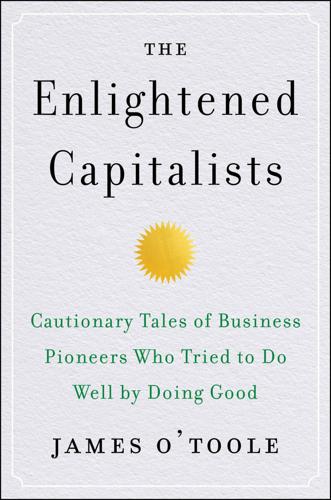
The Enlightened Capitalists
by
James O'Toole
Published 29 Dec 2018
Pete Engardio, “Beyond the Green Corporation,” Businessweek, January 29, 2007, 51–64. 3.Countless books and articles published in recent years have advocated greater corporate social engagement and documented exemplary practices—particularly with regard to climate change, pollution, and working conditions in the developing world. See especially C. K. Prahalad and S. L. Hart, “The Fortune at the Bottom of the Pyramid,” Strategy+Business, no. 26 (2002): 54–67; Andrew W. Savitz, The Triple Bottom Line: How Today’s Best-Run Companies Are Achieving Economic, Social and Environmental Success—and How You Can, Too (San Francisco: Jossey-Bass, 2006); E. Freya Williams, Green Giants: How Smart Companies Turn Sustainability into Billion-Dollar Businesses (New York: AMACOM, 2015); and John Mackey and Raj Sisodia, Conscious Capitalism (Cambridge, MA: Harvard Business School Press, 2013).
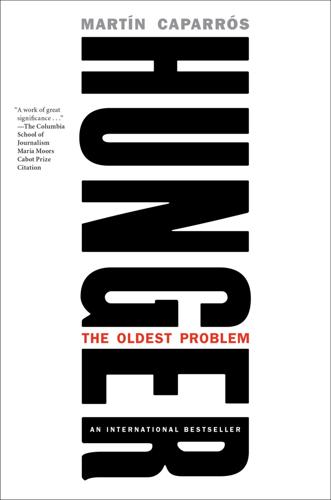
Hunger: The Oldest Problem
by
Martin Caparros
Published 14 Jan 2020
London: Hurst, 2009 (English translation of original French volume). pp. 105-124. 9 Crombé, Xavier. “Building the Case for Emergency: MSF and the Malnutrition Factor.” A Not-So Natural Disaster: Niger 2005. London: Hurst, 2009 (English translation of original French volume). 10 Prahalad, C. K. The Fortune at the Bottom of the Pyramid. Upper Saddle River: Wharton School Publishing, 2006. 11 Rice, Andrew. “The Peanut Solution.” The New York Times Magazine. 2 Sept. 2010. ON HUNGER: ORIGINS 1 Cordón Bonet, Faustino. Cocinar hizo al hombre. Barcelona: Tusquets Editores, 2002. 2 King James, Exodus 16:3, 16:4. 3 Russell, Sharman Apt.